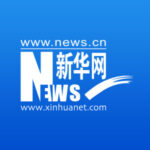On August 16, the « 2025 Asset Management Annual Conference, » guided by the Southern Finance Omnimedia Group and hosted by 21st Century Business Herald with joint sponsorship from SPD Bank, was grandly held in Shanghai Pudong.
During the roundtable discussion on « Exploring the Path of Diversified Allocation of Major Asset Classes, » based on his investment experience, it was noted that if the bond market is to further explore returns, beyond seeking gains within the scope of bond investment itself, it may involve relatively peripheral directions. For example, combining spot bonds with derivative transactions, including treasury bond futures and interest rate swaps, can help enhance returns for bond products.
« We indeed feel that after the 10-year government bond yield reached 1.6%, it faced significant resistance to further downward movement. Influenced by the recent rise in the stock market, the bond market has adjusted accordingly, with the 10-year government bond yield returning to around 1.74%. » Regarding seeking returns in bond investments, it was believed that, in addition to traditional methods such as credit spreads and duration, special attention should be paid to the fact that amid this year’s artificial intelligence (AI) boom, many institutions have attempted to use AI and other methods to assist bond investment and strive for excess returns.
« In terms of seeking returns externally, it is mainly reflected in the ‘+’ part of ‘fixed income+’ and ‘bond+’. » It was pointed out that in the asset allocation of the ‘+’ part, there was previously strong optimism about the investment opportunities in convertible bonds. However, with the recent continuous rise in convertible bonds, their overall valuation has reached a relatively high level. Nevertheless, this does not mean that convertible bonds face a significant decline, as the equity market remains relatively hot.
In addition to allocating convertible bonds, the scope of ‘+’ can be extended to multiple assets, such as equity assets. In equity assets, it is believed that various sectors have shown certain opportunities this year, differing from the previous pattern dominated by dividend sectors. This year, besides the dividend sectors showing relatively good returns, technology and « anti-involution » fields have also performed remarkably. This reflects that when macroeconomic policies actively respond to adverse changes in economic operations, the market can continuously explore and emerge with new opportunities. Taking the « anti-involution » field as an example, policies have created related investment opportunities for the capital market. Therefore, we can be more optimistic about equity assets.
It was further stated that the equity market is undergoing a rebalancing of underlying funds, specifically reflected at three levels: The first level is the rebalancing between dollar assets and non-dollar assets. Since the beginning of this year, multiple signs indicate that considerable funds have flowed from dollar assets to non-dollar assets. The second level is the rebalancing of funds between stocks and bonds. From recent behaviors such as fund subscriptions and redemptions, some initial signs have been observed that some funds are beginning to shift from the bond market to the equity market. The third level is the asset allocation rebalancing after the maturity of residents’ deposits. This portion is substantial, and during its rebalancing process, the above three layers of fund adjustments all form favorable support for equity assets.
« Another type of asset we are relatively optimistic about is gold. » It was explained that although gold prices are already at a high level, there are still multiple long-term factors continuously driving its value. On one hand, the U.S. dollar’s status as a global reserve currency is gradually weakening, although this process may be lengthy. On the other hand, the allocation behavior of central banks towards gold will constitute medium to long-term support for gold assets. Under these two factors, from a long-term perspective, gold remains a category worth continuous attention in asset allocation.
Regarding « fixed income + dollar assets, » it was stated that the returns on bank dollar wealth management products and RMB wealth management products are currently converging. As for « + gold assets, » the biggest concern is that gold has risen for three consecutive years, and its current price is at a high level. Although it has a positive foundation in the long term, it is difficult to expect continuous rises in the short term. In response to this situation, differentiated analysis based on customer types is needed.
Specifically, for customers holding dollar assets with allocation needs, products such as QDII and mutual recognition funds can be considered. For customers holding RMB assets and planning cross-regional asset allocation, avoiding a single investment in dollar assets and possibly turning to multi-currency asset allocation to achieve balance is advisable. For customers holding RMB who previously purchased dollar wealth management products mainly for the high dollar interest rates and have no strong preference for foreign currency conversion, they




